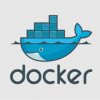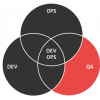 |
Lessons Learned in Jenkins Configuration Management Managing the configuration of Jenkins—the popular open source, continuous integration and continuous delivery application—is not trivial. Even a small change can make the platform less stable or result in problems. Vishal Sahasrabuddhe talks about his experiences using Jenkins and offers tips to take advantage of its many powerful features to automate deployment and increase productivity and product quality. |
|
 |
Continuous Improvement in Configuration Management Continuously improving your configuration management practice results in delivering high-quality, complex software beautifully and efficiently. But it’s equally as important to observe the entire CM process so you can envision and plan for worst-case scenarios as well as think about how you can scale with time—and keep on improving. |
|
 |
Software Project Planning and Processes: 5 Steps to Success Too often, software teams come up with a lofty goal for a project, then immediately launch into development in an effort to get to market faster. But skipping the planning process for how to actually achieve your goal can be dangerous. John Basso gives five steps to drive front-end planning and set your project up for success. |
|
 |
Discovering Your Leadership Drive Some people are born with the traits most suited to becoming an effective leader. Others may find that they have to work a lot harder to achieve success in a leadership role. But each of us has some innate potential to step up and take charge. If your team needs direction, don't be afraid to discover whether you could be the one to provide it. |
|
 |
7 Test Automation Requirements for Higher Software Quality An advanced, efficient test automation platform, combined with a more systematic and comprehensive architecture, can help boost quality assurance operations to a whole new level. In order to best maximize a software product’s reliability, consider these seven requirements for your test automation efforts. |
|
 |
Containers: A Tester's Friend or Foe? Containers support the timely delivery of a quality software application. However, the change to a DevOps process involving containers will require testers to adapt to this new, more agile environment. What does that mean for testers and the work they do? Here's how testers can embrace these changes, containers, and DevOps. |
|
 |
Considering Containers: Is Docker Right for You? Over the past few years, containers have emerged as possibly the most important trend in enterprise technology since the advent of hardware virtualization—and Docker is the most popular. But what do containers really do, and is adopting Docker the right move for your organization? Read on to find out. |
|
 |
Testers: An Integral Part of the DevOps Team Building innovative software faster and better is imperative to an organization’s success, so it makes sense to take advantage of DevOps. But what some teams fail to consider is that testing is a crucial part of the process. Without a “test early and often” mentality, DevOps would only be able to release software faster—not better. |
|
 |
Visualizing the Complex Software Development Process Software development is an elaborate process, so many organizations follow defined procedures. But it can be difficult to keep track of every step. It is often helpful to try to visualize the complex processes involved; seeing them outlined can help you understand what needs to be completed and how to manage the overall effort. |
|
 |
DevOps Meets IoT for Increased Performance and Productivity Organizational leaders should consider an integrated hardware and software delivery approach combining technology from the Internet of Things and the DevOps ability to accelerate delivery. Because the IoT blends a number of standalone end systems, it can benefit from the DevOps approach of taking a comprehensive, end-to-end systems view. |
Pages
Upcoming Events
| Jun 02 |
AI Con USA Bridging Minds and Machines |
| Sep 22 |
STARWEST Software Testing Conference in Anaheim & Online |
| Oct 13 |
Agile + DevOps USA The Conference for Agile and DevOps Professionals |
Recommended Web Seminars
| May 23 | How Generative AI Boosts Speed and Quality in Software Testing |
| On Demand | Building Confidence in Your Automation |
| On Demand | Leveraging Open Source Tools for DevSecOps |
| On Demand | Five Reasons Why Agile Isn't Working |
| On Demand | Building a Stellar Team |












